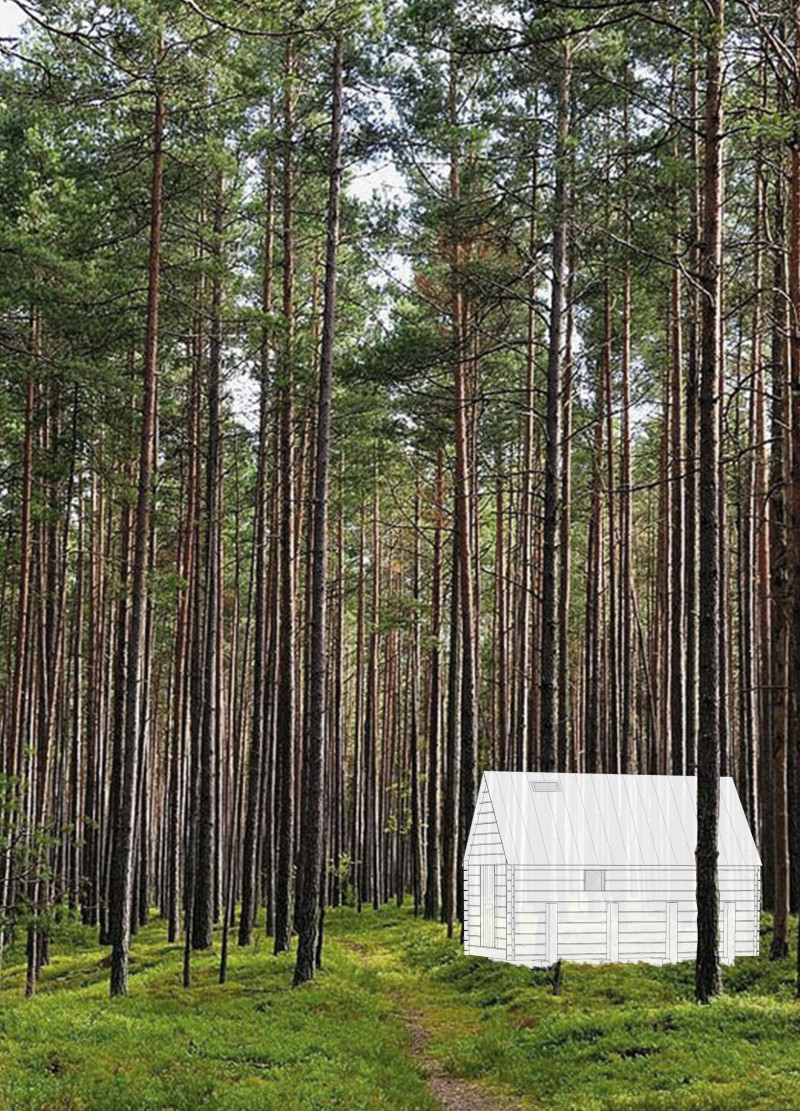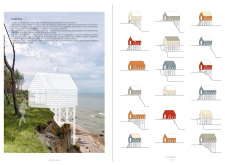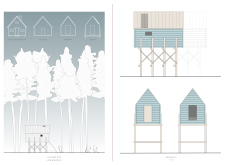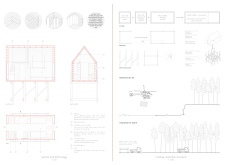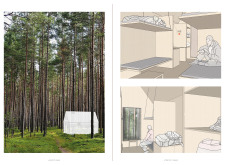5 key facts about this project
The cabin functions as both a residence and a recreational space, designed to facilitate relaxation and connection with nature. The layout promotes a fluid interaction between interior and exterior spaces, encouraging occupants to immerse themselves in their surroundings. The structure features a compact design, with a focus on efficient utilization of space without compromising comfort.
Key components of the cabin include a "shell" structure that forms the primary living area and a service zone housing essential amenities such as a bathroom and kitchenette. This modular approach allows users to customize their experience, whether accommodating families or individual travelers. The primary living quarters are thoughtfully arranged to maximize natural light, with large windows providing expansive views of the adjacent landscapes, thereby reinforcing the connection to the outdoors.
Materiality is a central aspect of the design, with careful selection of local and sustainable materials. The use of local timber for the framing emphasizes a minimal carbon footprint, while galvanized steel ensures durability against the elements. This choice of materials enhances the cabin's longevity and aesthetic cohesion with its environment. Additionally, the inclusion of glass elements allows for an abundance of natural light, creating a bright and welcoming atmosphere that warms the interior.
The design demonstrates resilience through its elevated structure on wooden stilts, minimizing flood risk in coastal areas and adapting seamlessly to varied topographies in forested settings. This thoughtful elevation further connects the cabin to its surroundings, blending traditional craftsmanship with modern building techniques. The structure is designed for modular expansion, allowing users to add additional units as needed, which reinforces the project’s adaptability and appeal.
Unique design approaches include the integration of eco-friendly features such as rainwater collection systems and solar panels. These elements not only promote sustainability but also foster a sense of self-sufficiency within the cabin. Occupants may enjoy essential amenities powered by renewable energy sources, reflecting a growing trend toward sustainable living without sacrificing comfort or style.
Interior features prioritize functionality with the use of multi-purpose furniture and open spaces that encourage movement and social interaction. This layout aims to foster a sense of community among occupants, whether they are a family or a group of friends. The design encourages shared experiences while offering private nooks for reflection or solitude.
The thoughtful integration of architectural plans, sections, and designs showcases the cabin’s functional aspects and aesthetic choices. Exploring these documents can provide deeper insights into how the design harmonizes with its geographic context, reflecting both contemporary needs and timeless principles. The casetta serves as a reminder of how architecture can facilitate connection—between people, nature, and the passage of time.
For those interested in the intricate details of this architectural project, reviewing the architectural plans and sections can offer a comprehensive understanding of its design intentions and innovative offerings. Discover how the clever use of materials and space creates a unique retreat that aligns with modern lifestyles while paying homage to traditional architectural forms.


